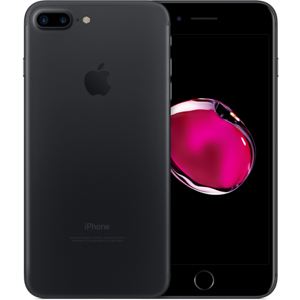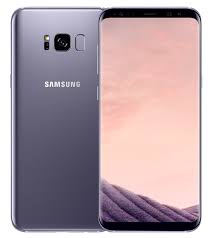iphone 7 vs samsung s8
IPHONE 7 VS SAMSUNG S8
IPHONE- 7 SAMSUNG- S8
| Device type | Smart phone | Smart phone | |||||
| OS | iOS (10.x) | Android (7.0) | |||||
| Dimensions | 5.44 x 2.64 x 0.28 inches (138.3 x 67.1 x 7.1 mm) | 5.86 x 2.68 x 0.31 inches (148.9 x 68.1 x 8.0 mm) | |||||
| Weight | 4.87 oz (138 g) the average is 5.4 oz (156 g) |
5.36 oz (152 g) the average is 5.4 oz (156 g) |
|||||
| Materials | Main body: Aluminum | Main body: Glass; Accents: Aluminum | |||||
| Features | Fingerprint (touch) | Iris scanner, Fingerprint (touch) | |||||
| Rugged | Water, Dust resistant | Water, Dust resistant | |||||
| IP certified
IP certified – The IP code indicates the degree of protection against dust and water. The first number represents dust protection, while the second represents water protection. In IP67, for example, 6 means a completely dust-tight device, while 7 means the device can stay immersed in up to 1 meter of water for up to 30 minutes. In IP68, a higher level of water protection is expected, but exact numbers aren’t specified: both depth and continuance are specified by the manufacturer on per device basis. |
IP 67 | IP 68 | |||||
| Colors | Black, Gold, Silver, Pink, Red | Black, Gold, Gray, Silver, Blue | |||||
| Display | |||||||
| Physical size | 4.7 inches | 5.8 inches | |||||
| Resolution | 750 x 1334 pixels | 1440 x 2960 pixels | |||||
| Pixel density
Pixel density – The pixel density of a display represents the number of pixels over an area of one inch. It’s measured in “pixels per inch”, or ppi. The higher the number, the more detailed and good-looking the display is. |
326 ppi | 570 ppi | |||||
| Technology
Technology – There are two main screen technologies currently used in phones and tablets: LCD and AMOLED. The former usually features a light source and liquid crystals, while the latter is based on organic light-emitting diodes. Newer LCD variations like IPS-LCD and Super-LCD allow for very accurate color reproduction and very wide viewing angles, where no significant image quality loss is observed. Current AMOLED screens differ in such a way that they can exhibit much more saturated colors (sometimes too much) and incredibly high contrast levels, which is due to black color being completely black in AMOLED displays. |
IPS LCD | Super AMOLED | |||||
| Screen-to-body ratio
Screen-to-body ratio – Shows what part of the frontal area of a phone its screen occupies. |
65.71 % | 84.26 % | |||||
| Peak brightness | 625 cd/m2 (nit) | ||||||
| Features | Pressure-sensitive, Oleophobic coating, Scratch-resistant glass, Ambient light sensor, Proximity sensor | HDR video support, Scratch-resistant glass (Corning Gorilla Glass 5), Ambient light sensor, Proximity sensor | |||||
| Camera | |||
| Camera | 12 megapixels | 12 megapixels | |
| Flash | Quad LED | LED | |
| Aperture size
Aperture size – The aperture of a camera is the opening through which light travels before it reaches the camera sensor. The smaller the number is, the bigger this opening is, allowing for more light to pass. |
F1.8 | F1.7 | |
| Focal length (35mm equivalent)
Focal length (35mm equivalent) – The lower (shorter) the focal length number, the wider the shot will be. Conversely, longer focal length cameras produce narrower frames, which can be used for telephoto (zoomed-in) purposes. |
28 mm | 26 mm | |
| Camera sensor size
Camera sensor size – A bigger camera sensor is able to capture more light, and thus produce better photos. |
1/3″ | 1/2.55″ | |
| Pixel size
Pixel size – The size of an individual pixel on a camera’s sensor. The bigger, the better. |
1.22 μm | 1.4 μm | |
| Hardware Features | Sapphire crystal lens cover, Optical image stabilization, Autofocus, Back-illuminated sensor (BSI) | Optical image stabilization, Autofocus (Phase detection) | |
| Software Features | RAW image capture, Touch to focus, Face detection, Self-timer, Digital zoom, Geo tagging | Manual focus, Object tracking, RAW image capture, Touch to focus, Smile detection, Face detection, Voice activation, Self-timer, Digital zoom, Geo tagging | |
| Settings | Exposure compensation | Exposure compensation, ISO control, White balance presets, Shutter speed control | |
| Shooting Modes | Burst mode, High Dynamic Range mode (HDR), Panorama (up to 63 megapixels) | Burst mode, High Dynamic Range mode (HDR), Panorama, Frames, Effects | |
| Camcorder | 3840×2160 (4K) (30 fps), 1920×1080 (1080p HD) (120 fps), 1280×720 (720p HD) (240 fps) | 3840×2160 (4K) (30 fps), 2560×1440 (QHD), 1920×1080 (1080p HD) (60 fps), 1280×720 (720p HD) (240 fps) | |
| Features | Optical image stabilization, Time-lapse video, Continuous autofocus, Video calling, Video sharing | High Dynamic Range mode (HDR), Time-lapse video, Hyperlapse, Continuous autofocus, Object tracking, Picture-taking during video recording, Video light, Digital image stabilization, Video calling, Video sharing | |
| Front-facing camera | 7 megapixels | 8 megapixels | |
| Features | High Dynamic Range mode (HDR) | Wide Angle, Autofocus, High Dynamic Range mode (HDR) | |
| Hardware | |||
| System chip
System chip – Most modern handsets use an advanced chip that includes many of the device’s hardware modules like the processor, Wi-Fi, Bluetooth and sometimes even the wireless radio. This field shows what particular system chip (or System-on-a-Chip) is used in the phone. |
Apple A10 Fusion APL1W24 | Qualcomm Snapdragon 835 MSM8998 | |
| Processor
Processor – The processor is the main computing component of a phone and is a major factor when it comes to the overall speed of the device. Some more powerful smartphones use dual-core and quad-core processors designed to deliver greater performance. |
Quad-core, 2340 MHz, 64-bit | Octa-core, 2350 MHz, Kryo 280, 64-bit, 10 nm | |
| Graphics processor
Graphics processor – The graphics processor is important for the smooth operation of the system and especially in games and other applications that may involve complex graphics and animations. |
Yes | Adreno 540 | |
| System memory
System memory – System memory, or RAM memory is the type of memory that the device uses to temporarily store data from the OS or currently-running apps. The more RAM available to the device, the better the performance will be when multiple or heavier programs are running. |
2 GB RAM | 4 GB RAM | |
| Built-in storage
Built-in storage – Bigger storage capacity allows you to keep more content saved onto your device, such as more applications, photos or video. Games and video content typically take up the biggest amount of storage space. |
256 GB | 64 GB | |
| Storage expansion
Storage expansion – Some handsets allow you to expand their storage capacity by using a memory expansion card – most often microSD. Expansion memory is mostly suitable for media storage, such as photo, video or music content. |
microSD, microSDHC, microSDXC up to 256 GB |
| Battery | |||
| Capacity
Capacity – The bigger, the better! However, battery capacity is not the only factor that has an effect on battery life. Those include the chipset in use, the software running on the device, as well as the consumer’s unique usage pattern. |
1960 mAh | 3000 mAh | |
| Type | Not user replaceable, Li – Ion | Not user replaceable, Li – Ion | |
| Wireless charging | Built-in (Qi, Powermat) | ||
| Talk time | 29.00 hours the average is 19 h (1165 min) |
||
| Stand-by time | 13.4 days (321 hours) the average is 19 days (462 h) |
||
| Talk time (3G) | 14.00 hours the average is 18 h (1060 min) |
||
| Stand-by time (3G) | 10.0 days (240 hours) the average is 24 days (581 h) |
||
| Internet use | |||
| 3G | 12 hours | 11 hours | |
| LTE | 12 hours | 12 hours | |
| Wi-Fi | 14 hours | 14 hours | |
| Music playback | 40.00 hours | 67.00 hours | |
| Video playback | 13.00 hours | 16.00 hours |



